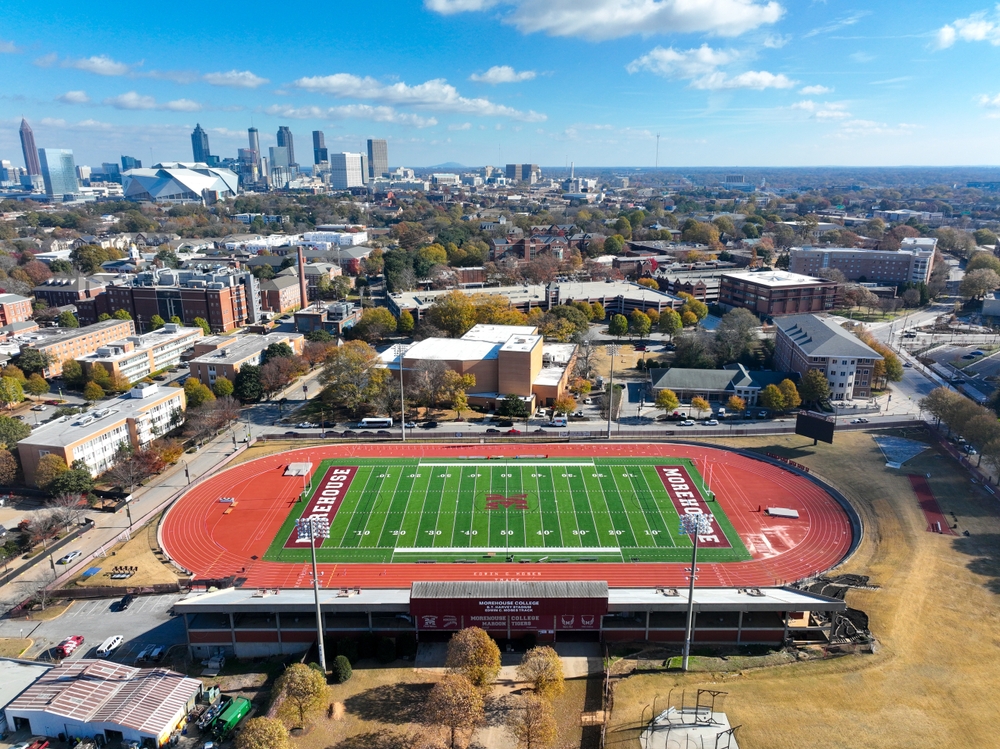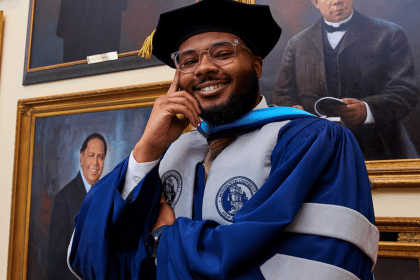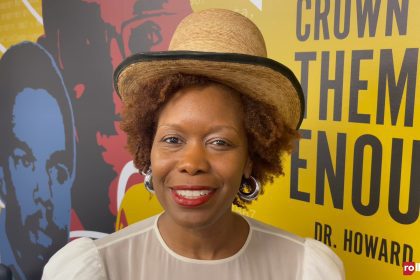Morehouse College conducted a solemn ceremony recognizing Dennis Hubert, a young Black man whose educational aspirations were violently terminated by racial hatred in 1930. Imam Plemon El-Amin accepted the posthumous degree on behalf of his uncle, creating a moment of historical reconciliation that bridged decades of injustice with contemporary recognition of lost potential and enduring family legacy.
The Atlanta ceremony represents more than academic recognition; it acknowledges the systemic violence that prevented countless African Americans from achieving their educational and professional goals during the era of legalized segregation. Hubert’s story illustrates how racial terrorism systematically disrupted Black communities and individual lives throughout the early 20th century.
Brutal murder shocked 1930s community
On June 15, 1930, Dennis Hubert encountered seven white men who accused him of insulting a white woman, an allegation that frequently served as justification for racial violence during this period. The confrontation escalated to lethal violence when Hubert was shot in the back of the head while on the grounds of the Crogman School for Negroes, demonstrating the audacity of perpetrators who felt empowered to commit murder in broad daylight.
The public nature of Hubert’s killing reflected the terroristic intent behind such acts, designed not only to eliminate individual victims but also to intimidate entire communities through displays of unchecked violence. Witnesses to the shooting experienced the psychological trauma intended to reinforce racial hierarchies through fear and brutalization.
The murder’s occurrence at an educational institution carries particular symbolic weight, as schools represented hope, advancement, and future possibilities for African American communities. The choice of location suggests deliberate targeting of educational aspirations and community institutions that symbolized Black progress and self-determination.
Rare legal accountability in era of impunity
The indictment of Hubert’s killers represented an unusual instance of legal accountability during a period when racial violence typically occurred without consequences. Most perpetrators of anti-Black violence operated with complete impunity, confident that legal systems would ignore or actively support their actions through discriminatory law enforcement and judicial practices.
The decision to pursue legal action against Hubert’s killers indicated some level of community outrage and possibly external pressure that overcame typical patterns of official indifference. However, historical records suggest that even when indictments occurred, convictions remained extremely rare due to all-white juries and sympathetic judicial systems.
This exceptional legal response highlights how thoroughly normalized racial violence had become, making any attempt at accountability noteworthy despite representing basic legal obligations that should have applied universally regardless of victims’ race or social status.
Presidential recognition connects historical and contemporary injustice
Morehouse President David Thomas characterized Hubert as both a son of Morehouse and a martyr of justice, drawing explicit connections between his 1930 murder and the 2012 killing of Trayvon Martin. This comparison emphasizes how patterns of racial violence have persisted across nearly a century, adapting to changing social contexts while maintaining core elements of discrimination and dehumanization.
The parallel between Hubert and Martin illustrates how young Black men continue facing lethal consequences for existing in spaces where their presence is deemed threatening or inappropriate by others. Both cases involved allegations that justified violence against unarmed individuals whose actual behavior posed no genuine threat to their attackers.
Thomas’s commentary positions Hubert’s story within broader narratives of ongoing racial injustice, challenging assumptions that historical racism represents resolved issues rather than continuing problems that manifest through evolved but persistent discrimination patterns.
Family legacy spans generations of educational achievement
El-Amin’s acceptance of his uncle’s degree occurred within the context of extensive family connections to Morehouse College and its sister institution, Spelman College. Ten male family members have graduated from Morehouse while seven women completed their education at Spelman, demonstrating multi-generational commitment to higher education despite historical barriers and ongoing challenges.
This educational legacy represents triumph over the systematic exclusion that claimed Hubert’s life and educational opportunities. The family’s sustained engagement with historically Black institutions illustrates how communities built alternative pathways to advancement when mainstream institutions remained inaccessible or hostile.
El-Amin reflected on the prayers, memories, and knowledge preservation that maintained his uncle’s story across decades, emphasizing how family and community networks sustained historical consciousness despite official neglect or active suppression of such narratives.
Institutional recognition addresses historical trauma
Morehouse College’s decision to award the posthumous degree represents institutional acknowledgment of how racial violence disrupted educational communities and individual aspirations. The ceremony serves multiple functions: honoring Hubert’s memory, recognizing family sacrifice, and creating educational opportunities for contemporary students to engage with difficult historical realities.
The timing of this recognition, nearly 94 years after Hubert’s death, suggests evolving institutional consciousness about addressing historical injustices and their continuing impact on communities. Such ceremonies create spaces for collective mourning, recognition, and commitment to preventing similar tragedies.
The college’s characterization of this action as honoring a son of Morehouse establishes Hubert’s belonging within the institutional community despite his inability to complete his education due to violent interruption. This posthumous inclusion challenges exclusions based on tragic circumstances beyond individual control.
Contemporary relevance challenges progress narratives
The ceremony’s timing and framing explicitly challenge narratives that position racism as a historical problem overcome through legal and social progress. By connecting Hubert’s 1930 murder to contemporary cases of racial violence, speakers emphasized continuities rather than discontinuities in American racial dynamics.
This historical consciousness serves educational purposes by helping contemporary students understand how past injustices connect to present challenges. The recognition that racist violence spans generations can inform more sophisticated approaches to addressing current discrimination and preventing future tragedies.
The event also demonstrates how historical trauma affects families and communities across multiple generations, creating ongoing obligations for recognition, healing, and justice that extend far beyond immediate legal or social responses to individual incidents.
Educational institutions as sites of resistance and healing
Morehouse College’s posthumous degree ceremony illustrates how historically Black institutions serve functions beyond traditional education, including community healing, historical preservation, and social justice advocacy. These institutions have consistently provided spaces for addressing systemic exclusion and celebrating achievements despite external hostility.
The decision to recognize Hubert at an institutional ceremony creates opportunities for current students to engage with their institution’s broader historical mission and contemporary obligations. Such events connect academic study with lived experiences of injustice and resistance that shaped the communities these institutions serve.
The ceremony also demonstrates how educational institutions can actively address historical trauma rather than simply acknowledging it, creating practices that honor victims while inspiring continued commitment to justice and equality among current and future community members.
Collective memory and ongoing responsibility
El-Amin’s commentary emphasized how Hubert’s sacrifice created consciousness about the value of human life and the importance of justice, suggesting that his death contributed to broader awareness and commitment to protecting vulnerable community members. This interpretation positions tragedy within narratives of resistance and education rather than simple victimization.
The preservation of Hubert’s story across multiple generations illustrates how communities maintain historical consciousness despite official neglect or active suppression of such narratives. Family and community networks serve as alternative archives that sustain memory and meaning when institutional support is absent.
The ceremony’s emphasis on ongoing vigilance and continued struggle suggests that honoring historical victims requires active contemporary commitment rather than passive remembrance. This approach connects historical recognition with present-day obligations for justice and equality.
Symbolic justice and incomplete resolution
While the posthumous degree provides meaningful recognition for Hubert and his family, it also highlights the impossibility of fully addressing historical injustices through symbolic gestures alone. The ceremony acknowledges what was lost while demonstrating what can be recovered or honored decades later.
The gap between Hubert’s 1930 death and his 2024 recognition illustrates how long communities may wait for acknowledgment of historical wrongs. This delay raises questions about institutional responsibilities and the adequacy of delayed recognition for addressing systematic injustices.
The ceremony creates space for reflection on the relationship between individual recognition and systemic change, suggesting that honoring victims like Hubert must connect to broader efforts to prevent similar tragedies and address the conditions that enable racial violence.
Morehouse College’s recognition of Dennis Hubert demonstrates how educational institutions can address historical trauma while inspiring contemporary commitment to justice, creating bridges between past injustices and present obligations that honor victims while empowering survivors and their communities.

















